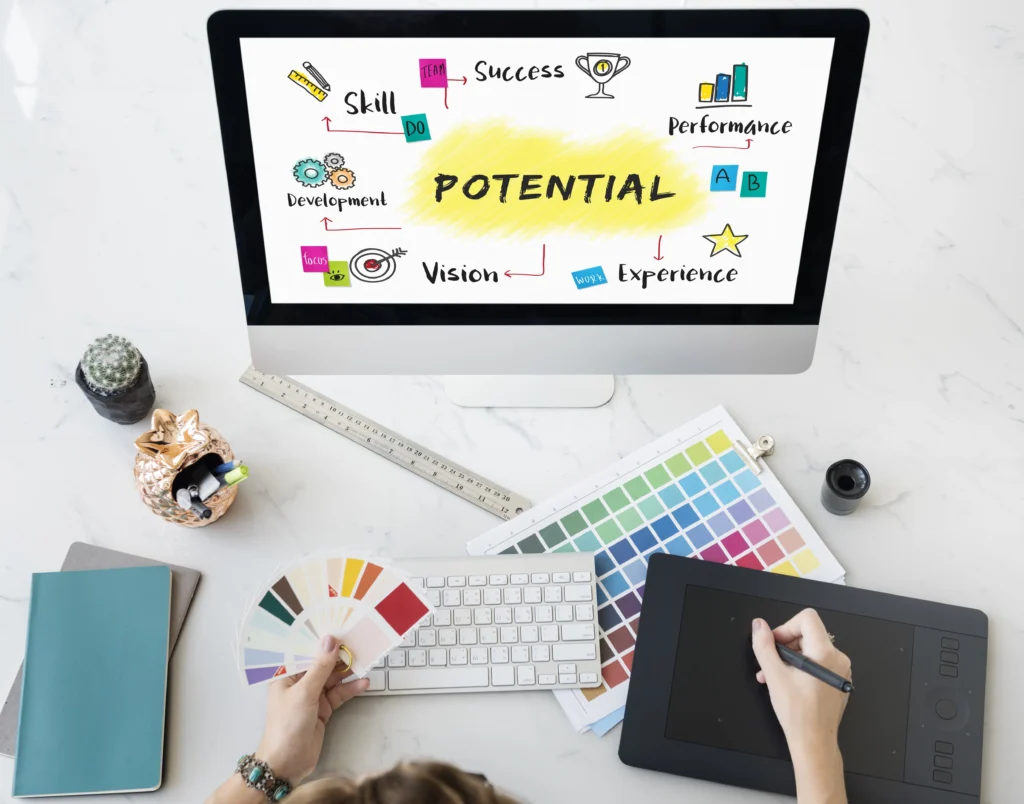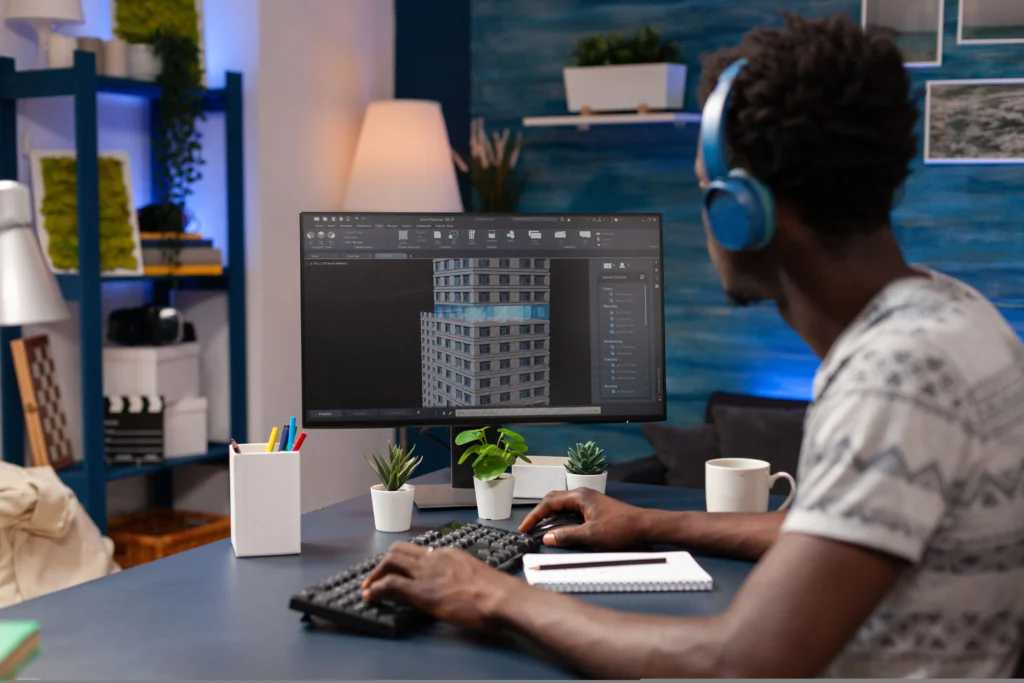In 2024, product design has become a critical differentiator for brands across industries. As consumer expectations evolve, so does the importance of innovative, functional, and aesthetically pleasing product designs. Businesses that prioritize excellent design are seeing increased customer engagement, loyalty, and market share. This article explores why product design matters more than ever and highlights key trends shaping the industry today.
The Growing Importance of Product Design

Product design is no longer just about making things look good—it plays a fundamental role in how consumers perceive and interact with a brand. In fact, product design is directly linked to user experience (UX), brand identity, and even sustainability efforts.
User-Centric Design: Today’s consumers expect products to offer not only functionality but also ease of use. If a product doesn’t solve a problem efficiently or causes frustration, users are quick to switch to alternatives. Brands need to focus on intuitive design that improves overall user satisfaction.
Brand Identity: A well-designed product can become the face of a brand. Think of companies like Apple and Tesla, whose products are instantly recognizable. In 2024, strong product design remains a cornerstone of building a distinctive brand identity.
Sustainability: With consumers becoming more environmentally conscious, product design needs to incorporate sustainable materials and production methods. According to a report by McKinsey, sustainability is a top consideration for 66% of global consumers when making purchasing decisions. Brands that fail to prioritize eco-friendly designs may lose a competitive edge.
User-Centric Design: Today’s consumers expect products to offer not only functionality but also ease of use. If a product doesn’t solve a problem efficiently or causes frustration, users are quick to switch to alternatives. Brands need to focus on intuitive design that improves overall user satisfaction.
Brand Identity: A well-designed product can become the face of a brand. Think of companies like Apple and Tesla, whose products are instantly recognizable. In 2024, strong product design remains a cornerstone of building a distinctive brand identity.
Sustainability: With consumers becoming more environmentally conscious, product design needs to incorporate sustainable materials and production methods. According to a report by McKinsey, sustainability is a top consideration for 66% of global consumers when making purchasing decisions. Brands that fail to prioritize eco-friendly designs may lose a competitive edge.
Key Trends in Product Design for 2024

The rapid evolution of technology, consumer expectations, and environmental awareness is driving several trends in product design. Let’s explore the top trends that will define the industry in 2024.
1. Sustainability at the Core
Sustainability is no longer an afterthought—it’s central to product design in 2024. Consumers want products that have minimal environmental impact, and brands are increasingly using eco-friendly materials, adopting circular design principles, and focusing on longevity rather than disposability. Designers are embracing recycled materials, biodegradable options, and even zero-waste production methods.
For example, brands like Patagonia and Allbirds have gained global recognition for their sustainable product designs. Incorporating environmentally friendly elements into your product design can also reduce long-term costs and appeal to a growing segment of eco-conscious consumers.
2. Human-Centered Design
Human-centered design, which focuses on solving real problems for users, continues to be a dominant trend. In 2024, the focus is shifting towards empathy-driven design, where the needs, behaviors, and emotions of users drive product development. This approach emphasizes usability, accessibility, and inclusivity.
Designers are now conducting extensive research to better understand their target audience and create products that align with their specific needs. From ergonomic office furniture to personalized tech gadgets, products in 2024 are all about enhancing the user’s quality of life.
3. AI and Smart Technology Integration
Artificial intelligence (AI) is reshaping the way products are designed and how they interact with users. AI-powered products can adapt and learn from user behavior, creating a more personalized experience. Smart technology integration, such as voice assistants and smart home devices, is also becoming increasingly common.
For instance, products like Google Nest and Amazon Alexa demonstrate how AI can enhance daily life. In 2024, product designers will need to find creative ways to seamlessly integrate AI and IoT (Internet of Things) technology into everyday products while maintaining simplicity.
4. Minimalism and Functionality
Minimalist design has been trending for several years, but in 2024, it’s becoming more about functionality than just aesthetics. Consumers are looking for products that are simple yet efficient, where every element serves a purpose. Clutter-free designs not only improve user experience but also give products a sleek, modern appeal.
Take inspiration from brands like Muji and Dyson, known for their minimalist yet highly functional product designs. In this era of “less is more,” functionality and simplicity will continue to dominate.
5. Modular Design for Customization
Modular design allows users to customize or adapt a product to their specific needs, and this trend is booming in 2024. From modular furniture systems to customizable tech gadgets, the ability to personalize products adds significant value. Brands that offer this flexibility not only enhance user satisfaction but also encourage long-term customer loyalty.
In the tech world, products like Google’s Project Ara (modular smartphone concept) reflect the growing interest in customizable, adaptable designs.
1. Sustainability at the Core
Sustainability is no longer an afterthought—it’s central to product design in 2024. Consumers want products that have minimal environmental impact, and brands are increasingly using eco-friendly materials, adopting circular design principles, and focusing on longevity rather than disposability. Designers are embracing recycled materials, biodegradable options, and even zero-waste production methods.
For example, brands like Patagonia and Allbirds have gained global recognition for their sustainable product designs. Incorporating environmentally friendly elements into your product design can also reduce long-term costs and appeal to a growing segment of eco-conscious consumers.
2. Human-Centered Design
Human-centered design, which focuses on solving real problems for users, continues to be a dominant trend. In 2024, the focus is shifting towards empathy-driven design, where the needs, behaviors, and emotions of users drive product development. This approach emphasizes usability, accessibility, and inclusivity.
Designers are now conducting extensive research to better understand their target audience and create products that align with their specific needs. From ergonomic office furniture to personalized tech gadgets, products in 2024 are all about enhancing the user’s quality of life.
3. AI and Smart Technology Integration
Artificial intelligence (AI) is reshaping the way products are designed and how they interact with users. AI-powered products can adapt and learn from user behavior, creating a more personalized experience. Smart technology integration, such as voice assistants and smart home devices, is also becoming increasingly common.
For instance, products like Google Nest and Amazon Alexa demonstrate how AI can enhance daily life. In 2024, product designers will need to find creative ways to seamlessly integrate AI and IoT (Internet of Things) technology into everyday products while maintaining simplicity.
4. Minimalism and Functionality
Minimalist design has been trending for several years, but in 2024, it’s becoming more about functionality than just aesthetics. Consumers are looking for products that are simple yet efficient, where every element serves a purpose. Clutter-free designs not only improve user experience but also give products a sleek, modern appeal.
Take inspiration from brands like Muji and Dyson, known for their minimalist yet highly functional product designs. In this era of “less is more,” functionality and simplicity will continue to dominate.
5. Modular Design for Customization
Modular design allows users to customize or adapt a product to their specific needs, and this trend is booming in 2024. From modular furniture systems to customizable tech gadgets, the ability to personalize products adds significant value. Brands that offer this flexibility not only enhance user satisfaction but also encourage long-term customer loyalty.
In the tech world, products like Google’s Project Ara (modular smartphone concept) reflect the growing interest in customizable, adaptable designs.
Why Good Design Is a Business Imperative

In an increasingly competitive market, good design isn’t just a luxury—it’s a necessity. Businesses that invest in product design stand out and enjoy numerous advantages:
- Higher Customer Engagement: A well-designed product that solves real problems draws more attention and engagement from consumers. A great user experience ensures repeat business.
- Increased Brand Loyalty: A distinctive product design that delivers on its promise fosters trust and loyalty.
- Competitive Advantage: In industries where products are highly similar, design becomes the differentiator.
- Higher Conversion Rates: A good design leads to better user experience, which in turn increases conversion rates. According to Forrester Research, a well-designed user interface can raise your website’s conversion rate by up to 200%.
Measuring Product Design Success
How can businesses measure the success of their product design? Here are a few key metrics:
- Customer Feedback: Positive reviews, testimonials, and high satisfaction scores indicate successful design.
- Sales Performance: Monitor how design updates or new products impact your revenue.
- User Engagement: Track how users interact with your product. Are they using all the features?
- Brand Perception: Conduct surveys to understand how your design impacts brand perception.
Conclusion
As we move further into 2024, the importance of product design cannot be overstated. From sustainability to AI integration, the trends shaping the industry are pushing designers to innovate and focus more on user-centric and functional designs.
If you’re interested in learning more about product design or want to collaborate with a team of design experts, check out our latest insights on design trends. Let’s create designs that make an impact!



